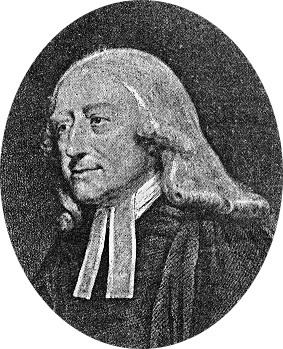 | ||
The Wesleyan Methodist Church of Australia is a Christian denomination with its origins in Wesleyan Methodism. It is the organisational name for contemporary The Wesleyan Church in Australia. (The historic Wesleyan Methodist denomination in Australia up to 1 January 1902 merged into the Methodist Church of Australasia.)
Contents
Background and formation
The American "Wesleyan Methodist Connexion" (later Church) had formed in Utica, New York in 1843 with a strong commitment to the abolitionist (anti-slavery) movement. Subsequently, the Wesleyans became a crucial part of the 19th century interdenominational Holiness Movement which saw itself as raised up to renew interest in Wesley’s teaching about holiness. They are not sinless perfectionists but believe, with John Wesley, that Christians can know the fullness of God’s sanctifying grace in a definite experience subsequent to their conversion.
The beginnings of the Wesleyan Methodist Church in Australia may be traced to 1945, when the Rev. Dr. Kingsley Ridgway offered himself as a Melbourne based "field representative" for a possible Australian branch of the Wesleyan Methodist Church of America, after meeting an American serviceman who was a member of that denomination.
Kingsley Ridgway's legacy continued to be felt in the church, with his son, the Rev. Dr. James Ridgway, providing denominational and institutional leadership over many years, and grandson the Rev. Kent Ridgway serving as Southern District Superintendent.
Contrary to a popular assumption, it is not a "continuing Methodist Church," formed as a result of the merger in 1977 of Congregationalist, Methodist and Presbyterian congregations to form the Uniting Church in Australia. It was never a part of the merger negotiations with those bodies that formed the Uniting Church, though some members and ministers, unhappy with the Basis of Union, switched allegiance to the Wesleyans.
Recent times
The Wesleyan Methodist Church of Australia saw increased growth in the 1980s, particularly in Queensland, much of this as a result of the aggressive church planting strategies of the Rev. Don Hardgrave, who also wrote the only denominational history of the church. As well as aiming at new convert growth, Wesleyan Methodists have welcomed into their membership those seeking an alternative to more liberal Protestant denominations, as well as Pentecostals looking for a church more grounded in historic Christianity. The 45th National Conference held in January 2004 reported 77 local churches, 96 ordained ministers, 2017 members and an average main Sunday service attendance of 3702 persons.
A previous National Superintendent, the Rev. Stan Baker led the church through a period of stabilisation and maturity, including a re-evaluation of its membership covenant and a period of influence in the wider Pacific region. From the late 1990s, the Australian church has fostered and encouraged the emergence of Wesleyan Methodist churches in New Zealand, the Solomon Islands, and Bougainville, Papua New Guinea.
At the 2008 South Pacific Convention and National Conference held at Philip Island, Victoria, a new National Superintendent was appointed, Rev. Lindsay Cameron. Lindsay brought to the position a desire to see the denomination strengthened through the upholding and proclamation of the uniqueness of Wesleyan doctrinal teaching.
The 2012 National Conference elected the Rev. Rex Rigby to the position of National Superintendent. He is the denomination's first indigenous leader.
Theology
The church is theologically conservative, Arminian in theology and typically non-charismatic. It appreciates both its revivalist and holiness heritage as well as its roots in John Wesley's Anglicanism. Along with Nazarenes and the Salvation Army, it has a strong commitment to the ordination of women, a position that in part arises out of its interpretive approach to the Bible and in part out of its revivalist heritage.
Historically, the church may be seen both as a new religious movement, emerging out of the post-war context of greater engagement between Australians and Americans and at the same time as a continuation of the long-standing Holiness and Revivalist strain within Australian evangelicalism.
The associated Kingsley College, Melbourne provides Bachelor of Theology, and Master of Arts degrees as well as other academic awards. It is a Member Institute of the Sydney College of Divinity, of the Australian and New Zealand Association of Theological Schools, and of the South Pacific Association of Bible Colleges.
Similarities to other denominations
The Wesleyan Methodist Church of Australia is similar in many respects to the Church of the Nazarene. Both churches are Wesleyan-Holiness denominations that emerged in Australia after the Second World War, largely as the result of interaction between Australian evangelicals and American servicemen. Nazarenes advertise themselves as “a Church in the Methodist tradition” and both Wesleyan and Nazarene churches are member churches of the World Methodist Council (The Wesleyan Methodist Church being a charter member of that organization).
